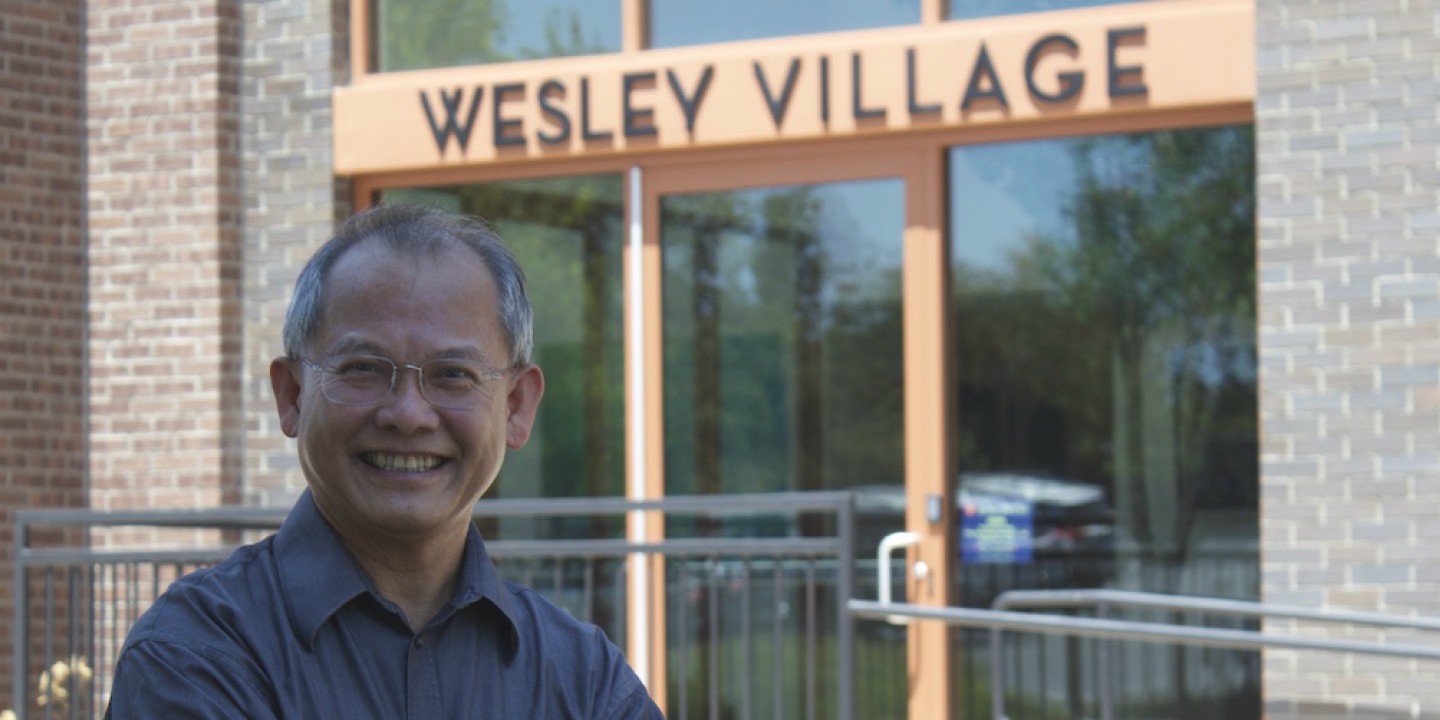California churches address housing crisis
Amid rising homelessness, congregations are building affordable housing.

When James Lapp moved to Santa Cruz in the mid-1990s, the pastor saw how quickly housing prices in the Northern California beach city were climbing. If he hadn’t bought his home then, he said, he would have been priced out of the market.
But it wasn’t until several years later, when he got a call from one of his congregants at St. Stephen’s Lutheran Church, that he decided to do something about the housing crisis.
The woman had grown up in the church and was working full-time as a cashier at a grocery store while her husband worked full-time as a mechanic. Even with dual incomes, they couldn’t afford to pay rent and to care for their two young children in a city that had become a bedroom community for tech workers in Silicon Valley.
Could they live in a trailer in the church’s parking lot? she asked Lapp.
“It really shocked the whole congregation,” said Lapp, who immediately approved the family’s move to the church parking lot.
California now has one-quarter of the nation’s homeless population, according to the U.S. Department of Housing and Urban Development. It has also seen the biggest growth in homelessness of all other states.
In the midst of skyrocketing homelessness, several congregations in California have embarked on the ambitious project of creating affordable housing. These churches see their land, which sometimes goes unused as congregations decrease in size, as providing the ideal solution.
Read our latest issue or browse back issues.
St. Stephen’s in Santa Cruz, with the support of a local coalition of 25 religious groups and nonprofits, opened an $18 million, 40-unit affordable housing complex on its property last year. More than 800 people applied for the apartments and 700 are on the waiting list.
Richard Flory, a sociologist at the University of Southern California’s Center for Religion and Civic Culture, said that the trend of churches sponsoring affordable housing makes sense.
“You provide permanent places for people to live instead of saying, ‘Hey, you can come and sleep in the pews,’” he said.
Garden Grove United Methodist Church had been a thriving community in Orange County for more than a century, with 2,000 congregants at its peak. But as the congregation aged and the racial and ethnic demographics of the area began to change from white to predominantly Vietnamese and Latino, it began to see its numbers decline.
At first, the church used some of its empty space for free medical clinics. But eventually it started thinking about long-term uses for its land and decided to repurpose a part of its parking lot into affordable housing. Last year Wesley Village, a 47-unit complex for seniors and families that is named after the denomination’s founder, opened.
Bau Dang, senior pastor of Garden Grove, said the process required negotiating with layers of city bureaucracy, a housing developer, and neighbors who could have objected to affordable housing in their vicinity.
But it was the church’s legacy that helped bring Wesley Village to fruition.
“This church has 140 years of history—it was here before the city was formed,” Dang said. The church had “built the trust and earned the respect of the community.”
Not every church vision for affordable housing is realized.
Forest Hill Christian Church, a Disciples of Christ congregation in San Francisco, developed a plan to use its entire property to build 150 affordable senior apartments, and to relocate its worship space into one room of the housing complex. Initially granted a $2 million investment from the city, the mayor’s office scrapped the project this year, citing higher-than-expected costs, geological concerns, and neighborhood opposition.
“When we would have meetings, there would be people from around the city that would come in support, but the neighborhood would just show up in droves and would try to drown out their voices,” said Susan Parsley, pastor of Forest Hill. “Some very hateful things were said: ‘How can you say you’re a Christian and be willing to do that to our neighborhood?’”
Based on that painful experience, Parsley would advise other churches to take the time to talk to the community to make sure there’s enough support for the project.
At St. Stephen’s in Santa Cruz, affordable housing not only benefits the city—which now has its first affordable housing development in more than 20 years—but the congregation as well, Lapp said. By issuing the housing developer a long-term lease for land it wasn’t using anyway, St. Stephen’s received more than $1 million, which it used to establish an endowment for its ministry and beautify its grounds, including landscaping, restoring an historic bell tower, and renovating the parking lot.
In addition to the church exterior, affordable housing has also created changes inside the congregation.
“It really enlivened the spirit of the church,” Lapp said.
The project has also helped Lapp in his outreach to the rest of the community by giving him an opening to talk about St. Stephen’s and the values it has. As a result, he’s seen attitudes towards the church—and organized religion itself—shift.
But for Lapp, building affordable housing has never been about what the St. Stephen’s stood to gain, whether through money or recognition. It’s about fulfilling the church’s most basic mission.
“To me, the witness of the church is to be out there, to be the salt of the earth, and to be really listening to your community and serving it,” he said. “Not just by collecting socks and doing a soup kitchen, but by addressing the powers that exist and meeting them with your own power for good and holding people accountable.” —the Christian Century
A version of this article, which was edited August 28, appears in the print edition under the title “California churches address housing crisis.’”



